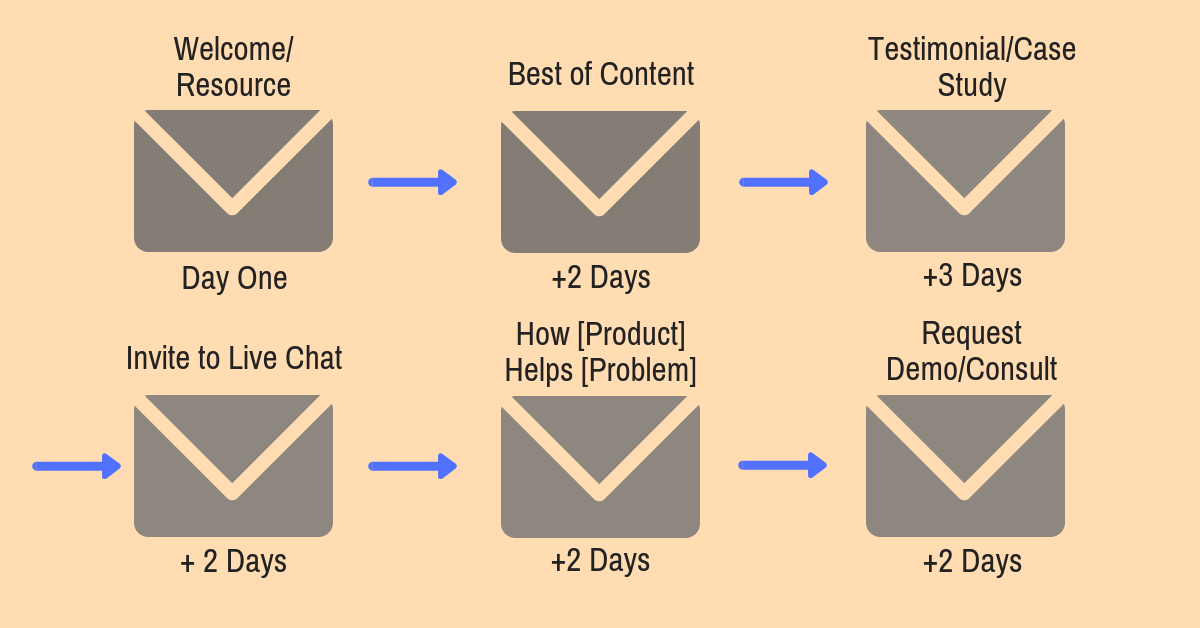Introduction
When people get on your email list, it likely happens one of two ways.
- You found their email (e.g. for cold emailing)
- They signed up on your website
For our purposes today, we’ll discuss those who have signed up of their own accord on your website.
So, why do people sign up?
Many reasons. But here are some of the most common.
- Lead Magnet: You have a resource that certain target visitors want. These visitors input their email in order to receive said resource.
- Newsletter: If you put out good content, some will want to hear about it when it comes out. (But you should still have a lead magnet in most cases.)
- Trial Sign-Up: Here at Gist, we get emails for visitors who want to try out our platform. (We also have blog subscribers, too.)
- Customers: If someone buys from you on your ecommerce store, in many cases, you’ll have their email.
Getting emails is tough enough, but once businesses have a list — the real problems start showing up.
Some send too much, others are pushy with the sales lingo, some send too little (or not at all). And most of the time?
What’s being sent isn’t that appealing.
It’s for all of these reasons, we’ve put together this massive list of email templates (across 7 different verticals).
This introduction is to help you figure out how to piece together the templates and create a beautiful sequence that:
- Nurtures your audience
- Builds trust in you (or your brand)
- Subtly educates about your products/services
- Moves leads down the funnel toward becoming customers
To do this, we’ll discuss several things.
- What Do You and They (Subscribers) Want?
- The Email Content that Provides Both Desires
- Moving Leads from Top of Funnel to Middle (and Beyond)
Let’s get started.
What Do Subscribers Want?
Ideally, you’ll want to find the convergence between your company goals and why subscribers actually signed up for your email list.

Before we get into the what of your subscribers, think about the goal of your email list very briefly.. You likely already know what the goals are anyway.
Now, try to summarize it into one sentence.
Example: If you’re an agency, you likely want to book a meeting or call to close the deal.
First, thing about why subscribers are there. The positive and negative of this can be good for you.
For instance, if some sign up to get your free resource and read your blog, but aren’t really in a market that you target — you need to know this, too!
In your email list and through your sequence, you can qualify leads and weed out suspects (individuals on your list likely to never buy). Knowing the scenarios that could create these suspects will help you tailor your email sequence to find the real prospects.
Questions to Ask About Subscribers’ Wants
Ask yourself a few questions and you should be able to sketch out who you want to read your emails and even what to send them.
- Why did these subscribers sign up?
Could have been for the magnet, a contest, a certain blog, advertising. How do your list grow to what it is? That’s your answer.
- What do they hope to accomplish with the content?
The content you provide already speaks to a certain audience, right? But what is it those searchers and subscribers want to do with the knowledge you provide.
- How will/do they use resources/lead magnets?
Similar to what they hope to accomplish, but will they just read your resource? Or, is it a tool they can revisit?
- How can they achieve those goals better with our product(s)/services?
This is where your goal meets theirs. Which of your subscribers wants matches up with the uses of your products/services?
Key Point: If they signed up, they want something. It’s a starting point. Now, you have to figure out how to move them from already searching for answers to your particular solution.
The Email Content that Provides Both Desires
In order to woo people down your sales funnel and into becoming customers, you’ll need to send them the messages that make them both find what they’re looking for and educate them on how you can help them.
The content you want to provide to your list;
- Is focused on them (NOT overtly promotional)
- Furthers subscribers toward their goals (which you should know by now)
- Includes prompts to educate and move leads further into your funnel
So, what types of emails would do these things? Plenty. But it’s not easy. Most of these emails require further content development.
Here’s a list of potential things you can send to prospects.
- Case Studies: How your customers have used your products to succeed in the form of written, audio (e.g. podcast) or video form.
- Explainer Content: Videos, infographic or blog content that explains different aspects of top products for ideal demographics. Give them an idea and preview and the products will sell themselves.
- Webinars: Live (or recorded) presentations are a great way to potential customers to buy. Start with extremely valuable content and end with how purchase.
Moving Leads Down Funnel
Having the right content to send is a crucial piece of the puzzle, but you’ll also need to send it the right way. This takes patience and testing.
To move leads down funnel, you’ll need three things.
1. Multiple Emails in a Cadence
You should have multiple emails in a series (or cadence) scheduled to deliver to new subscribers (using something like Gist’s email marketing tool).
How many emails and how long of a cadence depends (we’ll get to that in point 3 below).
For starters, you may want to try 5-6 emails over the course of a couple of weeks.
Here’s an image to get the ball rolling a bit.

2. A Single Call-to-Action (CTA) in Every Email
Every single email needs something for the recipient to do.
Even if you’re sending all of the content in the email itself (like a course or video), there should be a relevant link or “ask”. Something they have to do.
Example: You send a case study and put the entire study in the email, the end should be a link to a demo video to setup or use your product, a webinar showing how they can achieve the same results. Or, a request to set up a consult.
3. Continuous Testing of Everything
The most important step is to have a CTA in every email. Close to that, is to test everything.
Every few hundred visitors, you should be testing your opt-ins. Every few hundred emails, you should change up your cadence, or subject line, or CTA.
Write down a list of the elements you can test and start testing one-by-one. Try not to do too many tests at one time, because you won’t be able to tell which ones worked.
I hope you’ve enjoyed this introduction. And I really hope you’ll use our templates to grow your business.
Enjoy!


